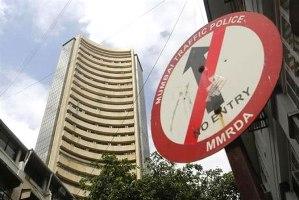 | « Back to article | Print this article |
 In the past month, small-cap stocks have beaten the front line as well as mid-cap peers hands down.
In the past month, small-cap stocks have beaten the front line as well as mid-cap peers hands down.
The S&P BSE Small Cap index, a gauge of small-cap companies, has surged nearly 17.5 per cent as compared to a 15.3 per cent rise in the S&P BSE Mid Cap index and a seven per cent rise in the S&P BSE Sensex.
Despite the overall bullish market sentiment in anticipation of a positive outcome of the general elections, the up-move in some of these stocks has been partly due to their financial performance in the recently concluded quarter (March 2014).
The aggregate net profit of 196 small-cap companies which have so far declared their March quarter results had risen an average of 34 per cent over a year to Rs 2,932 crore (Rs 29.32 billion).
In comparison, around 125 mid-cap companies had recorded a 14 per cent year's rise in net profit, CapitalinePlus data shows.
Since March, the small-cap index has surged 26.7 per cent as against a 20.2 per cent rise in the S&P BSE mid-cap index and an 8.8 per cent gain in the benchmark index.
Of the 447 stocks from the small-cap index, nearly half or 206 scrips outperformed the index, gaining 27 per cent each during the period.
Of these, the market value of 14 companies, which include IVRCL, Century Plywood, Ansal Properties, Dredging Corporation of India and Texmaco Rail has more than doubled.
Change in fortunes
After the outcome of general elections, analysts believe the new government will be effectively able to address issues like funding from banks, falling project award activity, premium rescheduling and structural bottlenecks such as environment and forest clearances for the stalled projects.
This, in turn, will not only help large-cap firms but will also be able to help turn around fortunes of a number of mid-and small-cap firms.
“The mandate has given a good opportunity for the (incoming) National Democratic Alliance (government) to have a free run in terms of implementing the policies they have and what they want to implement.
“After any election, if the sentiment turns out to be good, it is the small-and mid-caps which tend to outperform the large-caps in the near to medium term.
“We do believe the same pattern will be followed this time as well,” said R Sreesankar, head, institutional equities, Prabhudas Lilladher, in a recent report.
However, analysts caution that the turnaround and a reversal in the capital expenditure cycle will take time and investors should remain cautious and invest only in quality stocks.
“With pro-active policies, we expect capex growth to gather pace in two years.
“While positive sentiment due to the political regime change and pro-growth policies expected from the new regime would accelerate capex, caution against over-expectation is required,” suggests a report co-authored by Sujan Hajra, executive director, chief economist and co-head, research, at Anand Rathi Securities.
“On the near-term capex recovery, we favour chemicals and retail stocks.
“Capital goods and banks could benefit more in the longer run, while textiles and metals could be high beta plays on capex.”
Image: The Bombay Stock Exchange; Photograph: Reuters